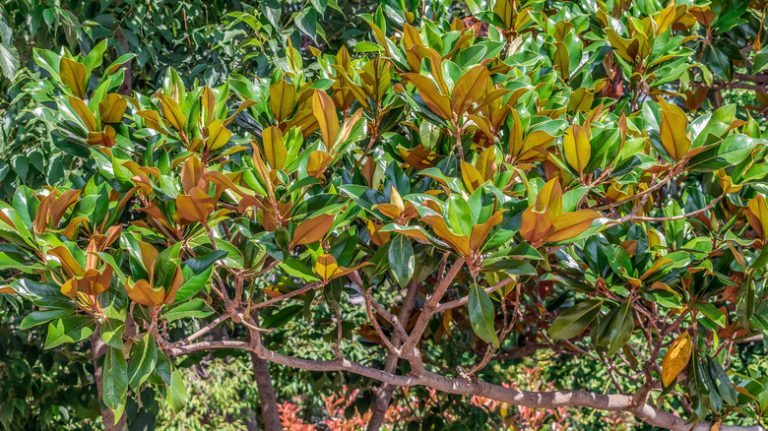American Holly (Ilex opaca) is a beautiful and popular tree that is native to the eastern United States. It is known for its glossy, dark green leaves and bright red berries, which attract squirrels, quail, and other birds.
The American Holly is highly valued by landscapers and gardeners for its many uses and attractive foliage. Its dense, conical growth habit makes it an excellent specimen tree, and it can also be planted as a barrier or windbreak. In fact, its thick foliage and sharp, pointed leaves act as a deterrent to would-be intruders.
One interesting fact about American Holly is that it is dioecious, meaning there are male and female plants. Female plants produce the bright red berries, which are highly sought after by many species of birds, including white-tailed deer. Male plants produce small, inconspicuous flowers that do not attract insects or pests.
American Holly is a hardy tree that can tolerate a wide range of temperatures, from -20 to 100 degrees Fahrenheit. It prefers well-drained soil with a slightly acidic pH and should be planted in full sun or light shade. In terms of size, American Holly can reach a height of up to 60 feet with a spread of 30 feet.
The planting of American Holly should be done in the fall or spring, when the soil temperature is between 40 and 70 degrees Fahrenheit. It is important to dig a hole that is at least as wide and deep as the root ball, and to water the tree thoroughly after planting. Regular fertilization and pruning can help keep the tree healthy and looking its best.
American Holly is generally resistant to most diseases and pests. However, it can be susceptible to fungal leaf spot and miners, which are small insects that feed on the leaves. These pests can be controlled with proper care and treatment.
In conclusion, American Holly is a versatile and beautiful tree that can be used in a variety of landscapes. Its bright green leaves, red berries, and conical growth habit make it a popular choice for gardens, parks, and residential areas. Whether used as a barrier or windbreak, or simply as a specimen tree, the American Holly is sure to brighten up any landscape.
American Holly Tree
American Holly (Ilex opaca) is a slow-growing evergreen tree that is native to the eastern and central United States. It is a member of the genus Ilex, which includes over 400 different species. The American Holly is highly valued for its ornamental and ecological value.
Identification: The American Holly tree can grow up to 60 feet in height and has a narrow, pyramidal shape. Its leaves are alternate in arrangement, with a shiny, dark green color and sharp, spiny edges. The bark of the American Holly is gray and smooth when young but becomes rough and furrowed as the tree ages. The branches are open and the trunk is usually straight.
When and where to plant: American Holly trees can be planted in full sun or partial shade. They prefer moist, well-drained soil but can tolerate some drought once established. It is best to plant American Holly trees in the fall or early spring, when the temperature and moisture are more moderate.
Cultivars: There are many cultivars of American Holly available, including varieties with yellow or orange berries. Some popular cultivars include ‘William Fleming’, ‘Hetzi’, and ‘Jersey Knight’. These cultivars have a narrower growth habit and are often used as specimen trees in home landscapes.
Hardiness: American Holly trees are hardy in USDA zones 5-9. They can tolerate a wide range of temperatures, from -20 degrees Fahrenheit (-29 degrees Celsius) in the winter to over 100 degrees Fahrenheit (38 degrees Celsius) in the summer.
Growth and Pruning: American Holly trees are slow-growing and can take several years to reach their full height. They require little pruning, but can be shaped or thinned to maintain an attractive form. Pruning should be done in late winter or early spring, before new growth begins.
Pests and Diseases: American Holly trees are relatively pest and disease resistant. However, they can be susceptible to fungal leaf-spot diseases and insect pests, such as scale insects and leaf miners. Regular inspection and treatment, if necessary, will help keep the tree healthy.
Ecological Value: American Holly trees provide important food and habitat for a variety of wildlife. The bright red berries are attractive to songbirds, and the dense foliage offers shelter and nesting sites. American Holly trees are also commonly used in wetland restoration projects and work well in upland and wetland habitats.
Value in Landscaping: American Holly trees are highly valued for their ornamental value in home landscapes. They can be used as specimen trees or planted in groups for screening or privacy. Their dense foliage and bright berries add color and interest to the landscape throughout the year.
Propagation: American Holly trees can be grown from seed, but it can take several years for the tree to reach maturity and produce berries. The best method of propagation is by taking semi-hardwood cuttings in late summer or early fall. These cuttings can be rooted in a mixture of perlite and peat moss and should be kept under high humidity in a plastic bag until roots form.
Fertilizer and Moisture: American Holly trees do not require much fertilizer, but a slow-release fertilizer can be applied in early spring. They prefer a moist soil but can tolerate some drought once established.
Pollinators: American Holly trees are dioecious, meaning there are separate male and female trees. Female trees produce berries while male trees produce pollen. Having both male and female trees planted within close proximity will ensure pollination and berry production.
Overall, the American Holly tree is a valuable addition to any landscape. Its attractive foliage, berries, and ecological value make it a popular choice for homeowners and landscapers alike.
Plant of the Week American Holly
American Holly (Ilex opaca) is a popular tree that is known for its ornamental value. It is native to eastern and central North America and is commonly found in forests, wetlands, and upland landscapes.
The American Holly tree can grow up to 60 feet tall and has a pyramidal shape with a narrow trunk. The leaves of this holly are spiny and dark green, adding to its appeal.
This tree produces small white flowers in the spring, which provide nectar for pollinators such as butterflies and bees. The fruits of the holly, known as drupes, appear in the fall and are highly valued by songbirds and white-tailed deer.
American Holly is a slow-growing tree that can adapt to a variety of climates, including both full sun and partial shade. It can tolerate a wide range of soils, including acidic and moist soils, making it a versatile choice for many gardeners.
For identification purposes, the American Holly can be distinguished from other holly varieties by its broader leaves and pyramidal shape. The tree is also commonly used in landscaping to add structure and year-round interest.
When planting American Holly, it is important to provide enough space for it to grow and develop. The tree should be planted in a location that receives full sun or partial shade. It is best to avoid planting it in wetland areas or places prone to flooding.
American Holly can be propagated through various methods, including planting seeds or taking cuttings. Propagation from cuttings is usually done during the wintertime while the tree is dormant. It is also possible to graft American Holly onto other tree species to create unique specimens.
American Holly has a high value for wildlife, providing food and shelter for many species. It is also a colonial tree, meaning it forms thickets over time. This can be beneficial for wildlife, providing both nesting sites and protection from predators.
In addition to its ecological value, American Holly is also important for its cultural significance. It has been used for centuries in holiday decorations, as well as for woodwork and furniture-making.
American Holly is susceptible to various pests and diseases, including fungal infections and leaf miners. The tree may also need some pruning to maintain its shape and health. Extension services and gardening resources can provide more information on specific care practices for American Holly.
In conclusion, American Holly is a beautiful and versatile tree that can be a valuable addition to any home or landscape. Its adaptability to different soils and climates, as well as its ecological and cultural importance, make it a popular choice for gardeners.
Ilex opaca
The Ilex opaca, commonly known as the American Holly, is a species of holly native to the eastern and central United States. It is a slow-growing evergreen tree that can reach a height of up to 60 feet and a width of up to 40 feet.
The American Holly is a popular ornamental plant, commonly grown for its glossy, dark green leaves and bright red berries. Its foliage is sharp and spiny, making it effective for creating barriers or privacy hedges. The white-tailed deer are known to eat the leaves, and birds are attracted to the berries.
| Common Name | American Holly |
|---|---|
| Scientific Name | Ilex opaca |
| Plant Type | Evergreen Tree |
| Height | Up to 60 feet |
| Width | Up to 40 feet |
| Leaf Color | Glossy Dark Green |
| Berry Color | Bright Red |
American Holly is hardy in USDA hardiness zones 6 to 9, and it prefers moist, well-drained soil. It is tolerant of a wide range of conditions, but it grows best in bright, open areas. Though it can tolerate partial shade, it may not produce as many berries in shady conditions.
When planting American Holly, it is important to create a hole that is wide and deep enough to accommodate the roots. Backfill the hole with a mixture of soil and compost, and water it well. Applying a slow-release fertilizer in the spring can help promote healthy growth.
American Holly is dioecious, which means it has separate male and female plants. Only the female plants produce the bright red berries, which appear in the wintertime and last throughout the winter. The berries provide food for birds and add ornamental value to the plant.
Propagation of American Holly can be done through seeds or cuttings. It is important to note that the seeds may take several months to germinate, and the resulting plants may not be true to the parent plant. It’s best to obtain information on propagating American Holly from your local extension office.
American Holly is generally a low-maintenance plant, but it can be susceptible to certain diseases and pests. Fungal diseases, like leaf spot and tar spot, can affect the foliage. Common pests include scales, spider mites, and whiteflies. Regular pruning can help maintain the shape and health of the plant, and it’s important to remove any diseased or infested branches.
In nature, American Holly plays an important role as a food source and habitat for a variety of wildlife. The bright red berries are a valuable food source for birds, especially during the winter months. The flowers of American Holly bloom in the spring and provide nectar for butterflies and other pollinators.
American Holly has many uses in landscaping, including as a specimen tree, privacy hedge, or foundation planting. It is commonly used in colonial-style gardens and gives a timeless, classic look. It can also be planted in woodlands or naturalized areas where it can provide food and habitat for wildlife.
In conclusion, Ilex opaca, or American Holly, is a versatile and attractive evergreen tree that adds beauty and value to any landscape. Its glossy foliage, bright red berries, and tolerance to a wide range of conditions make it a popular choice for both residential and commercial plantings. Whether grown for its ornamental appeal or its ecological benefits, the American Holly is a valuable addition to any garden.




